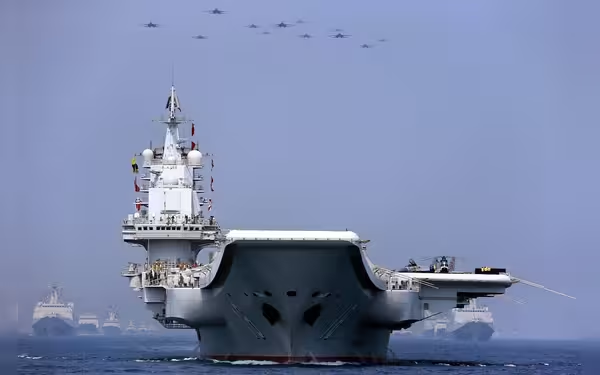Saturday, November 16, 2024 09:28 PM
China Advances Toward Nuclear-Powered Aircraft Carrier Capability
- China constructs nuclear reactor for aircraft carrier.
- Nuclear-powered carriers enhance military operational range.
- China aims to challenge U.S. naval supremacy.
 Image Credits: asiatimes
Image Credits: asiatimesChina is progressing towards developing nuclear-powered aircraft carriers, challenging U.S. naval dominance and enhancing its maritime capabilities.
China is making significant strides in its naval capabilities, particularly with its ambitions to develop nuclear-powered aircraft carriers. This move is seen as a direct challenge to the naval dominance of the United States and aims to extend China's reach across the world's oceans. Recently, reports have emerged that China is constructing a land-based prototype nuclear reactor designed for a large surface warship. This development is a crucial step toward the realization of China's first nuclear-powered aircraft carrier.
The prototype reactor is being built at Base 909 in Sichuan Province, which is part of China's broader strategy to enhance its maritime power. This initiative aligns with President Xi Jinping's vision of establishing a “first-class” navy. Unlike conventionally powered carriers, nuclear-powered vessels can remain at sea for extended periods without the need for refueling. This capability allows for more efficient operations, as they can carry additional fuel and weapons, thereby enhancing their overall effectiveness in military engagements.
Currently, only the United States and France operate nuclear-powered aircraft carriers, with the U.S. maintaining a fleet of 11 and France having one. China's pursuit of this technology highlights its ambition to not only challenge U.S. naval supremacy but also to develop a true “blue-water” navy capable of conducting operations far from its shores.
In addition to the nuclear-powered carrier project, China is rapidly modernizing its fleet. The recent commissioning of its third conventionally powered carrier, the Fujian, and ongoing work on a fourth carrier are part of this modernization effort. The advancements in nuclear propulsion technology could position China as the third nation to operate nuclear-powered aircraft carriers.
Experts have noted that a nuclear-powered carrier would offer virtually unlimited operational range and the ability to generate substantial energy for advanced systems, such as the electromagnetic aircraft launch system (EMALS). This technology, already implemented on the Fujian carrier, allows for more efficient aircraft launches, enabling more sorties and the deployment of aircraft equipped with greater fuel and weaponry.
China's advancements in naval technology, particularly in nuclear propulsion, signify a pivotal moment in global maritime dynamics. As China continues to enhance its naval capabilities, the balance of power on the high seas may shift, prompting other nations to reassess their own naval strategies. The implications of these developments extend beyond military might; they also reflect China's growing ambitions on the world stage, which could reshape international relations and maritime security in the years to come.













